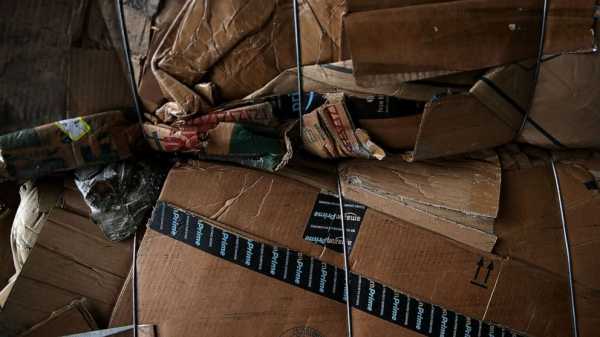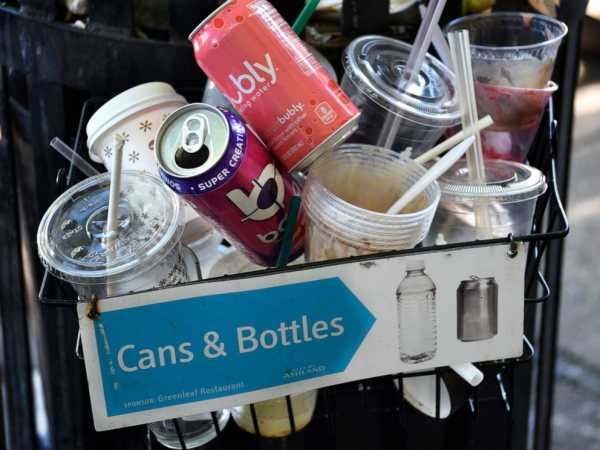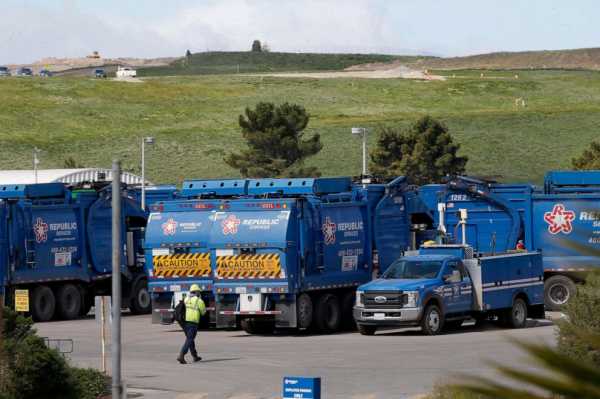
When Chip Britting celebrated the first Earth Day in April 1970, the then-teenager saw recycling as a promising industry and went on to create a community-led recycling center in Phelps, New York with his teacher. Now, 50 years later, some are calling the efficacy of recycling into question as landfills keep growing with items people put into blue and green bins.
The system is complicated by a number of issues the recycling public may not be aware of.
As a current volunteer at the nonprofit Ravalli County Recycling in Hamilton, Montana, Britting has seen the industry evolve from a small localized effort into a massive corporate endeavor — and one heavily dependent on global markets.
With this transformation has come a new set of challenges – namely, increased doubt in the system by citizens who recycle. But the distrust does not come out of the blue, Britting said.
“Back when it first started, people were optimistic about recycling. It was a catalyst for change,” he remarked. “Today, people are putting things in bins, and the materials disappear. Everyone thinks they’re being recycled, but recycling is a market-driven industry.”
Recycling grew from just 6% of the waste stream in the 1960s to 35% in 2017, according to the Environmental Protection Agency. The EPA touts the benefits of recycling including reducing waste, conserving energy as well as creating hundreds of thousands of jobs. And municipalities like Cincinnati, Allentown, Pennsylvania and Omaha, Nebraska have increased their commitment to recycling.
But if there is no market for the recyclable goods, said Britting, then those materials go to landfills.
In January 2018, global markets and commodity pricing of all scrap materials were severely disrupted by China’s National Sword policy, which banned plastics and other material from entering the country. Up until then, China had been the world’s main importer of global waste for nearly 30 years.
Before the policy was implemented, the United States exported about 31% of its scrap to China, per the Institute of Scrap Recycling Industries (ISRI).
With China’s new policy in place, U.S. recycling facilities now struggle to find markets for paper, cardboard. and plastic — three staples of the recycling industry that continue to rise in usage.

Robert Alexander/Getty Images, FILE
Cups, straws and cans sit in a recycling receptacle in Ashland, Ore., June 17, 2019.
As a result, some industry officials, like David Biderman, the executive director and CEO of the Solid Waste Association of North America (SWANA) believe landfill rates are rising.
According to the Environmental Protection Agency, after starting to decrease in 1990, landfill began to increase once again in 2010 to 139 million tons in 2017, the latest year for which data is available. And the amount of materials recycled also started decreasing after 2016, from nearly 69 million tons to 67 million tons the next year.
“There’s always been recyclable materials that end up in landfills,” Biderman said. “But over the last several years, more materials that have been separated curbside by residents are going to landfills because there’s not a market for them anymore.”
Some industry officials believe the problem is representative of America’s lack of infrastructure needed to properly collect, sort, and process their own recyclable materials.
China’s ban on scrap imports a boon to US recycling plants
The majority of curbside recycling in the United States is single stream, said Robin Wiener, president of ISRI. Recyclables go into one bin, get collected and then transported to a Material Recovery Facility (MRF). The items are then sorted by commodity type and processed for future use.
Problems occur when items such as plastic bags, batteries and materials with food are placed into the recycling bin, contaminating the entire load.
“15-25% of what American people throw away in single stream can’t be recycled,” Biderman said. “They aren’t paying attention to what can go into the bin, and it’s a major problem.”
Facilities continue to see large amounts of scrap like cardboard, glass and plastics accumulate. To deal with increased volumes of cardboard, in particular, many centers have resorted to stockpiling, which limits facility space and can be troublesome when weather conditions like rain, snow, and sun rays damage the quality of the material, resulting in it being landfilled.
In addition, the price to recycle glass often trumps market value, leading to lost profits for recycling centers. In Hamilton, Montana, facilities no longer accept the material.
The EPA reports that in 2017, 11.3 million tons of glass were generated in the U.S., yet only 3 million tons were recycled and more than twice that amount — nearly 7 million tons — sent to landfills. The amount of glass recycled rose from 100,000 tons in 1960 to more than 3 million tons in 2015, but that amount has been slowly declining, the data shows.
The number grows monumentally with plastics, with 35 million tons generated in 2017 (a number that is still on the rise), and nearly 27 million tons of that total going to landfills. The amount of plastic rose dramatically from 20,000 tons in 1980 to over 3 million tons in 2016 before starting to decline.
With global plastic production reaching an outstanding 335 million tons each year and expected to triple by 2050, industry officials told ABC News that the public’s understanding of what goods are accepted by recycling facilities is a driving force of landfill usage.
“If people get the wrong plastic in the bin, that material becomes trash,” Dianna Robinson, a materials manager at The Montana Department of Environmental Quality said.
Plastic is a particularly difficult challenge for facilities across the U.S., as film plastic and certain other plastics no longer have a market and cannot be accepted. As a result, flexible film plastic as well as plastic bags and packaging that are brought to recycling centers end up in landfills.
Breakthrough discovery: New plastic could be ‘holy grail’ of recycling
Lack of consumer knowledge isn’t the only factor leading to landfilling.
In recent years, closing recycling centers have been a mounting problem within the U.S. In August, California’s largest scrap facility RePlanet closed over 300 of its centers.
Joyce Levesque of Hancock, Maine, experienced a similar fate when her center, Coastal Recycling, closed down in April. Problems for Coastal began five years ago when single stream recycling flooded the market and led to a drop in revenue. After 25 years of business, the center, which serviced five towns, was forced to close its doors.
“What’s happening now is that there’s no place for recyclables to go,” said Levesque. “They’re getting put in the trash. The new recycling station in Hampton, Maine, accepts both trash and recycling, so now people pay to have their recycling go in landfills when they think it’s being recycled.”

MediaNews Group via Getty Images, FILE
The Newby Island Landfill and the Newby Island Resource Recovery Park are seen in Milpitas, Calif., on March 12, 2019.
Closing recycling centers are particularly problematic in rural areas where facilities can be broadly spread out.
“In Hamilton, Montana, the next town with a recycling center is 65 miles away one-way, and the price for fuel can be expensive,” said Montana congressman Dusty Johnson.
“Facilities are small here — they’re at the back of a church or a grocery store and community led by volunteers. When it starts to cost money to recycle that material, it’s going to bankrupt the program, and the program’s going to get shut down.”
Heather Church, the Eastern Washington Recycling Specialist at the Washington State Department of Ecology, believes that the public is unaware of the complex issues facing recycling.
Church fears that the distrust between recyclers and the industry will hinder recycling efforts. Despite this fear, she still has confidence in the advantages that come with recycling.
“Citizens that engage in curbside recycling want their materials to be recycled,” Church says. «If they’re being landfilled it can create a distrust between the public and the recycling industry.»
«The challenges have gotten harder, but that doesn’t refute environmental benefits recycling brings like conserving our natural resources and protecting our environment,» she said. «Real change will happen when we reduce waste all together by shifting consumerism and stop reverting to single use. We need to be doing more to be sustainable.»
Sourse: abcnews.go.com




